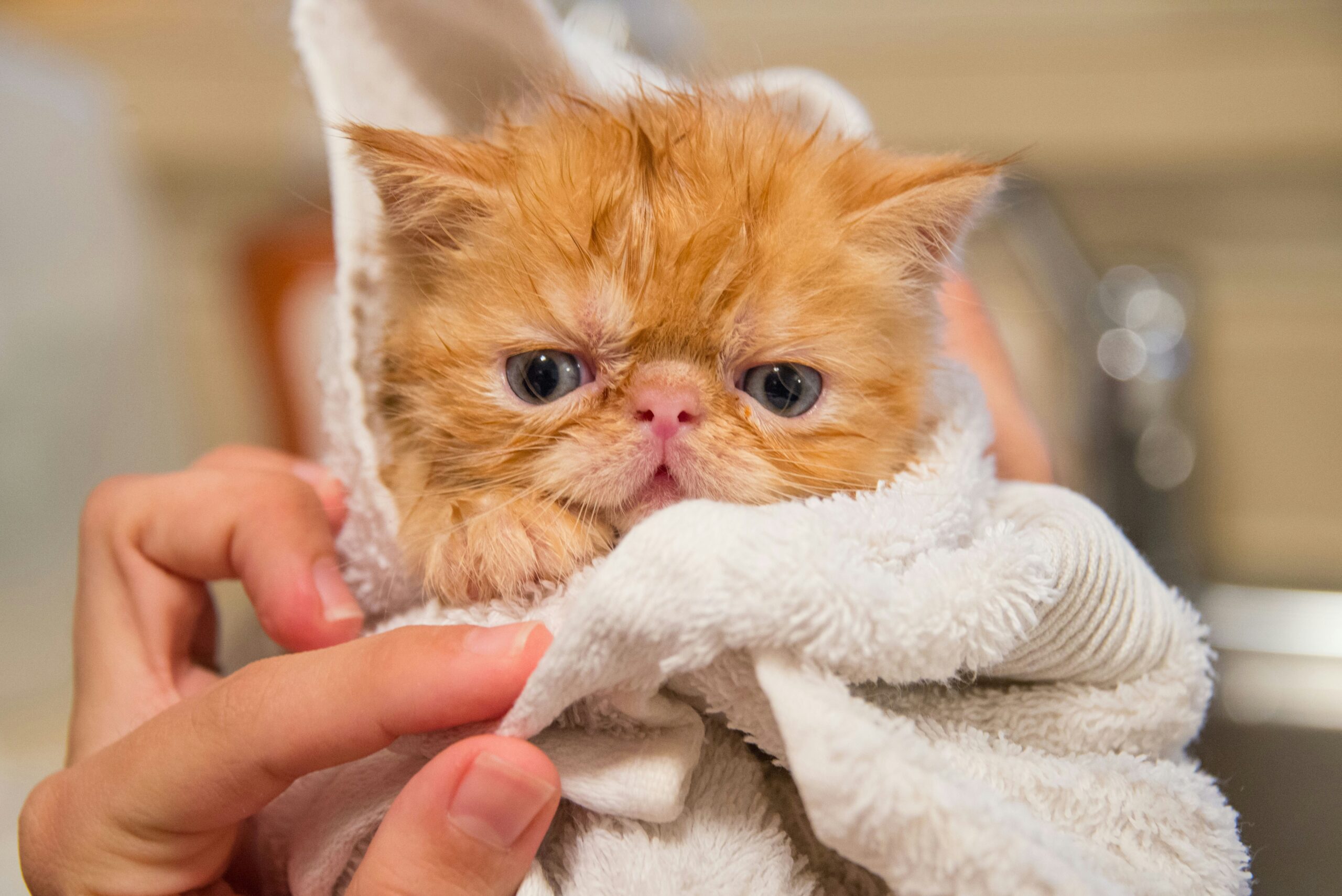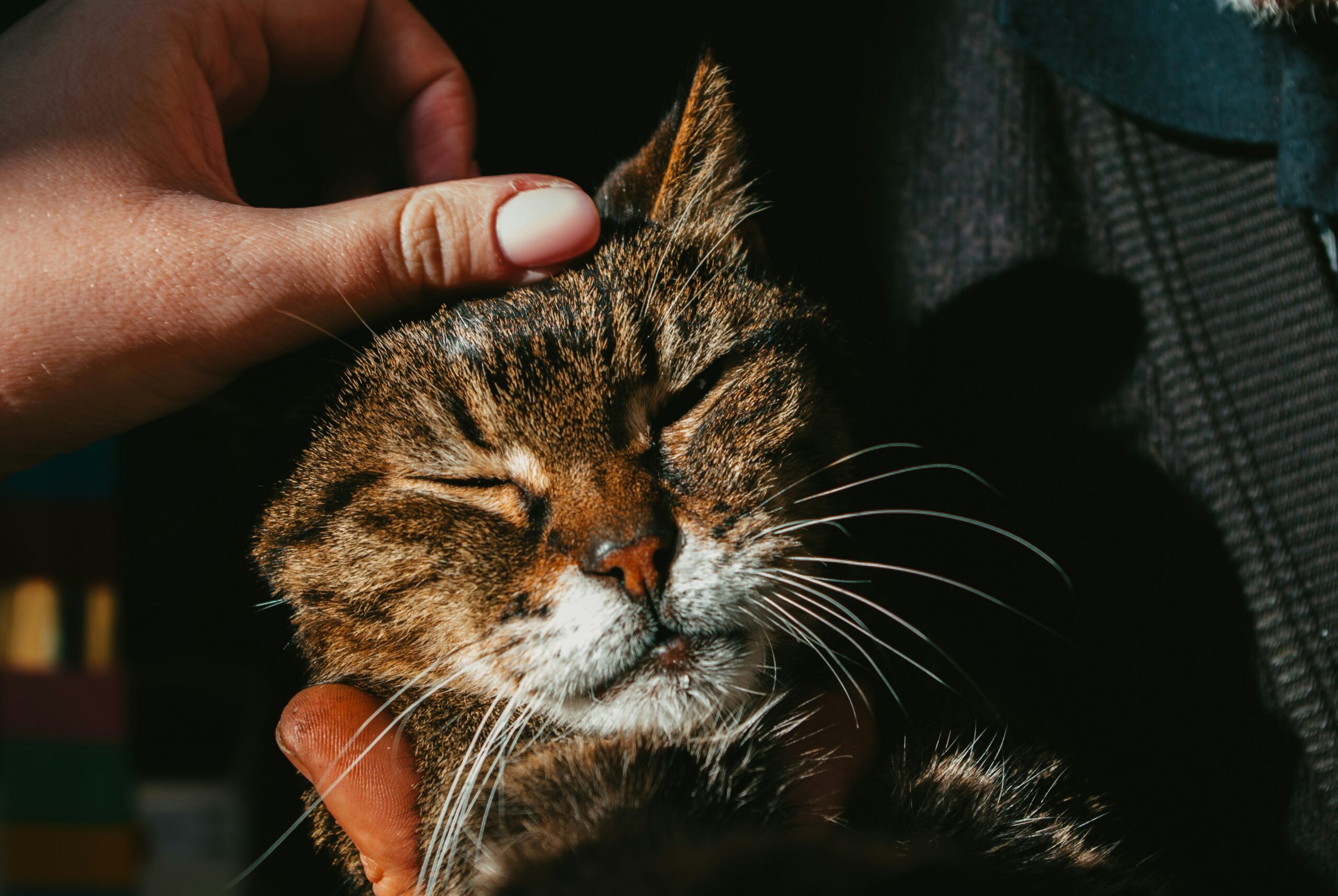Help! My Cat Thinks Bath Time is Murder.
I’ll never forget the first time I tried to bathe Luna. One second she was sitting calmly, the next—boom!—I looked like I’d lost a fight with a shredder. Turns out, how to clean a cat isn’t just about soap and water. It’s about strategy, patience, and knowing when to wear armor (okay, maybe just long sleeves).
Most cats are self-cleaning pros, but sometimes they get into stuff even their sandpaper tongues can’t handle—think motor oil, sticky substances, or that “interesting” mud puddle they just had to roll in. If you’ve ever wondered how to clean a cat in situations like these, here’s how to handle it without trauma (for either of you).
When to Bathe Your Cat: Signs It’s Time for a Full Cleaning
Contrary to popular belief, cats do occasionally need human intervention:
Toxic substances (cleaning products, oils, etc.) – Licking it off could poison them
Sticky messes (sap, gum, honey) – Water alone won’t cut it
Elderly/obese cats – They can’t reach everywhere
Medical reasons (fleas, skin conditions) – Vet may prescribe medicated baths
Pro Tip: If it’s just dirt, try a damp washcloth wipe-down first—many cats tolerate this better than full immersion.
According to the ASPCA, bathing may be necessary in some cases like skin infections or toxic substances
If you’ve adopted a stray kitten recently, here’s how to care for it properly before attempting a bath
Before the Battle: How to Clean a Cat Starts with Smart Prep
1. Gather Supplies Like a Cat Burglar
- Cat shampoo (human shampoo = bad for their skin)
- Non-slip mat (terror + wet tiles = chaos)
- Jug or handheld sprayer (a running faucet freaks them out)
- Towels (the fluffier, the better)
- Treats (bribery is ethical here)
2. Trim Nails First – Crucial Step in How to Clean a Cat Safely
Clip nails before bath time unless you enjoy the “Jackson Pollock look” on your arms.
3. Brush First, Bathe Second
Mats + water = felted cat sweaters (painful to detangle later).
The 5-Step “Keep All Your Blood” Bath Method
1. Start Slow: Gentle Watering is Key to How to Clean a Cat
- Fill the tub/sink with 3–4 inches of lukewarm water (test with your elbow—like baby formula temp).
- Use a jug to wet them gently, avoiding the face (ears and eyes are no-go zones).
2. Shampoo Tactics: Smart Application in Cleaning a Cat Properly
- Dilute shampoo in water first—direct application can irritate skin.
- Massage from neck down (cats lick themselves—you don’t want them ingesting soap).
3. The Great Rinse-Off
- Leftover shampoo = itchy skin. Rinse until water runs totally clear.
- Pro hack: Put a mesh laundry bag over your cat (seriously). It restrains claws while letting you wash through the holes.
4. Towel Turbo-Dry
- Cats hate blow dryers (and the noise can traumatize them).
- Wrap like a purrito in a towel, then blot—don’t rub (rubbing mats fur).
5. Reinforce Positivity After Cleaning Your Cat
- Offer high-value treats immediately to create positive associations.
- Expect some dramatic “I’m so abused” grooming afterward.
Cat Cleaning Alternatives: When a Full Bath Isn’t Needed
Waterless shampoo – Foam cleansers you massage in and wipe off.
Grooming wipes – Like baby wipes, but pH-balanced for cats.
DIY dry shampoo – Cornstarch + baking soda (brush through fur, then wipe).
Not sure what grooming products are safe for your cat? You might also want to read how to care for your cat at home.
Note: These aren’t for toxic substances—just light cleanups. If you’re unsure how to clean a cat in specific situations, always check with your vet.
Vet-Approved Safety Rules
Never use:
- Human shampoo (disrupts skin pH)
- Essential oils (toxic to cats)
- Cold/hot water (cats regulate temp poorly)
The American Veterinary Medical Association (AVMA) recommends only using cat-specific grooming products to avoid skin irritation.
When to call the vet:
- If your cat ingests something toxic during cleaning
- If skin looks red, swollen, or has sores post-bath
Final Thoughts on How to Clean a Cat Without Drama
Start young if possible—kittens adapt better. For older cats, keep sessions under 10 minutes and end on a good note (treats = trust).
Remember, learning how to clean a cat isn’t about perfection. It’s about getting the job done with minimal scars—physical or emotional.
And once your cat is clean and happy, don’t forget that nutrition matters too
Got a horror story or genius hack about how to clean a cat? Share it below! (And maybe send bandages.)



